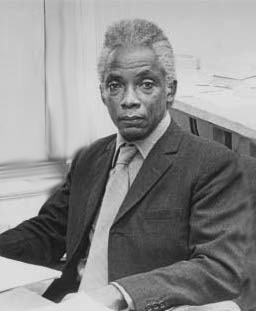Denis Williams
| Denis Williams | |
|---|---|

Denis Williams
|
|
| Occupation | Author, Painter, Archeologist |
| Nationality | Guyanese |
Denis Williams (1 February 1923 – 28 June 1998) was a Guyanese painter, author and archaeologist.
Born Denis Joseph Ivan Williams in Georgetown, Guyana, he received his early education there; he was granted a Cambridge Junior School Certificate in 1940 and a Cambridge Senior School Certificate in 1941. His early promise as a painter won him a two-year British Council Scholarship to the Camberwell School of Art in London in 1946. He lived in London for the next ten years, during which he taught fine art and held several one-man shows of his work. From 1957 to 1967 he taught art and art history at the School of Fine Art, Khartoum, Sudan; the University of Ife, Nigeria; Makerere University, Uganda; and the University of Lagos, Nigeria. He also published numerous articles on the history and iconography of West African classical art expressed especially in brass, bronze, and iron, and a book, Icon and Image: A Study of Sacred and Secular Forms of African Classical Art (1974, New York University Press).
Williams had been exposed to archaeology in Sudan and renewed his interest in 1968 when he finally returned to Guyana and established a homestead in the Mazaruni District. In his first letter to the Smithsonian Institution in 1973, he said: "my interest in these antiquities is that they may explain something about the who and how, as well as the when of the arts of the Guyana Indians." His appointment in 1974 as director of the newly created Walter Roth Museum of Anthropology in Georgetown provided the opportunity to pursue this quest. Initially, he concentrated his attention on petroglyphs, not only recording the designs, but excavating to recover the tools used and observing the environmental contexts. His Master's thesis, The Aishalton Petroglyph Complex in the Prehistory of the Rupununi Savannas, submitted to the University of Guyana in 1979, presented ideas elaborated in a 1985 article published in the journal Advances in World Archaeology.
...
Wikipedia
